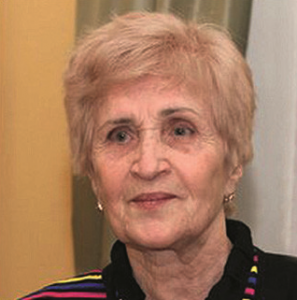 About the authors: Liliya Arutyunyan. I am a professor of speech therapy and all my professional life has been connected with the problem of stuttering. At present I am a scientific director of the Speech Therapy Center “Arliliya” (Moscow). About the authors: Liliya Arutyunyan. I am a professor of speech therapy and all my professional life has been connected with the problem of stuttering. At present I am a scientific director of the Speech Therapy Center “Arliliya” (Moscow).
I am the author of two books on stuttering: “How to treat stuttering” and “I do not stutter anymore” (Publishing House “Erebus”, Moscow) and the author of four inventions in “stuttering treatment method”. My papers were represented at the IFA and ISA conferences in Poland, Germany, Denmark, the USA, the UK and France. |
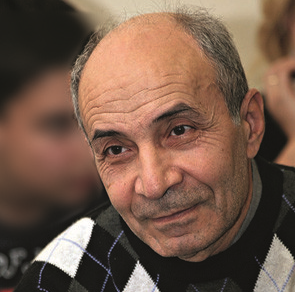 About the authors: Migran Arutyunyan. I am a physicist, graduated from Yerevan State University in 1971 and gained a postgraduate degree in 1979.I used to be a stutterer since I was four and all experts I consulted told me that stuttering cannot be cured. After successful treatment by L. Arutyunyan method in 1974, I developed better understanding of this problem and got the second profession of speech therapist. Over the last 15 years, I have been actively involved in the therapy development. About the authors: Migran Arutyunyan. I am a physicist, graduated from Yerevan State University in 1971 and gained a postgraduate degree in 1979.I used to be a stutterer since I was four and all experts I consulted told me that stuttering cannot be cured. After successful treatment by L. Arutyunyan method in 1974, I developed better understanding of this problem and got the second profession of speech therapist. Over the last 15 years, I have been actively involved in the therapy development. |
Dear conference participants!
We represent the Speech Therapy Center “Arliliya” which successfully engages in stuttering treatment. Dear Keith Boss, past Chair of the ISA Board, visited our organization and is familiar with our results.
We would like to introduce you to our new successful development of a technique previously researched by others between 1910 and 1960. This original research of ours has allowed us to increase significantly the effectiveness of the treatment.
As you will see from our Bios, we have been involved in stuttering and scientific research for many years. We know the problems people who stutter (PWS) have in their lives. We know that PWS who live their lives to the full deserve our respect and admiration. We know they have a quiet dignity to help them to continue. They need recognition for rising above their disability. But there are PWS who are unable to cope as well. We have seen this in many of our patients. As we developed and improved the effectiveness of our unique technique, we observed patient’s self-attitude changing. They had more dignity, they earned respect and their changed vocal abilities allowed others to appreciate and recognize more of their innate abilities. They began to live more fulfilling lives.
One of the most challenging problems with stuttering treatment is that people who stutter tend to relapse. It is well known that after following therapy course, newly achieved fluent speech is highly likely to gradually return to its original state for no obvious reason. Sometimes this occurs rapidly. Our holistic treatment over several months addresses this problem.
The cause of stuttering relapses might be better understood using the holographic hypothesis of memory. If we picture stuttering as a holographic image, each and every part of that image contains all the information about stuttering as a whole. That means, that any vague reminder of stuttering (in either speech or behavior) is able to reproduce the whole picture of stuttering. And since a holographic image cannot be erased, stuttering relapses seem to be expected. However, hologram manifestation requires certain conditions, or memory signs as they are called. Thus all security holograms, like those on banknotes, are only visible at a certain angle.
Consequently, the problem of stuttering relapse might be solved, providing we manage to exclude all memory signs of stuttering. But given the fact that even people who do not stutter may exhibit some dysfluencies when feeling stressed, is it ever possible to exclude all memory signs of stuttering?
The concept we suggest enables us to develop a new speaking skill that has nothing to do with stuttering. The new speech pattern excludes spasmodic pauses while the normal rate and the intonation structure are maintained. We called this kind of speech “zero stuttered”.
This kind of speech is based on the principle of saying the interjection “Oh”, which is like a sigh of relief when being released from extreme emotional or exercise stress. For example, a man is carrying heavy suitcases for a long time and finally put them on the floor… Imagine like what a relief that “Oh” sounds. A unique feature of this sound is that no one ever stutters when uttering it, despite being tensed up.
To study physical characteristics of relief interjections and zero stuttered speech, we developed a special device (breathing sensor) for AAW (anterior abdominal wall) movement imaging. In turn, AAW nearly follows the diaphragm movement.
To imitate the relief interjection, one has to take a deep breath with maximum AAW bulging and then to relieve the accumulated tension dramatically.
Figure 1 shows the AAW (and the diaphragm as well) movement pattern while sounding the interjection. The curve rise and fall corresponds to the AAW (diaphragm) tension and relaxation respectively. Figure 1 indicates that, when suddenly relaxed, the diaphragm is “swinging” due to its elasticity resilience and thereby straining again which makes it returned to its starting position. Further, the diaphragm relaxes sharply again and finally reaches a state of quiet breathing,

Figure 1. 1 – uninformative signal; 2 – the AAW movement pattern for uttering the interjection “Oh”
Note that when an individual utters “Oh” in a usual way, the AAW behaves differently (see Fig. 2).

Figure 2. 1 – uninformative signal; 2 – the AAW movement pattern for uttering the interjection “Oh” in a usual way
Probably it is the oscillatory pattern of the diaphragm movement that protects the interjection “Oh” from stuttering? That is exactly the idea that the zero stuttered speech theory is based upon.
We form zero stuttered speech in accordance with the following plan:
- First of all, we have to use diaphragmatic breathing during relaxation of the body’s muscles while the AAW moves backward and forward during inhalation and exhalation respectively (see Figure 3).
- While being calm and relaxed, we practice exhalation with the oscillatory diaphragm movement (see Figure 4). That is, when the maximum tension level of the diaphragm is reached, we relax the tense diaphragm sharply (T1 – T2 interval). Then we are waiting for the moment when the diaphragm reaches the maximum tension level again due to its resilient properties (T2 – T3). After that, we relax the diaphragm for the second time (T3 – T4) and return gradually to a state of quiet breathing (see Fig. 3).
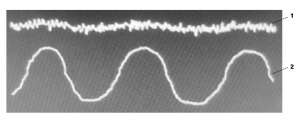
Figure 3. 1 – uninformative signal; 2 – the AAW movement pattern for the diaphragmatic breathing during muscle relaxation

Figure 4. 1 – uninformative signal; 2 – exhalation with the oscillatory diaphragm movement
Learning how to develop the skill of zero stuttered speech is arranged in this way:The first and accented syllables of the phrase have to be accompanied by sharp retracting the AAW. Those syllables that precede and follow the accented one should be synchronized with smooth forward movement of the AAW while controlling the process by breathing sensor and keeping relaxed.
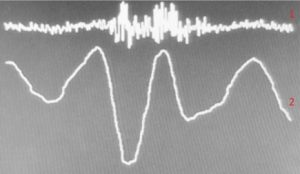
Figure 5. 1 – uninformative signal; 2 – the AAW movement pattern while saying the words “Excuse me”
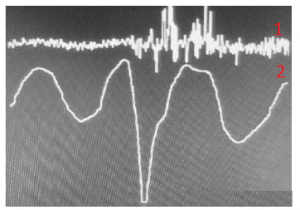
Figure 6. 1 – uninformative signal; 2 – the AAW movement pattern while saying the words “Excuse me please, where is the subway station?”
Figures 5, 6 and 7 representing several recordings of various phrases indicate that the diaphragm behavior pattern is virtually independent of the uttered phrase. This fact contributes to sustainable development of the zero stuttered speech skill.
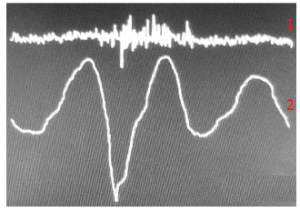
Figure 7. 1 – uninformative signal; 2 – the AAW movement pattern while saying the words “I live and work in Moscow”.
Certainly, all the aforementioned theses call for further research. However, we can claim that the idea of zero stuttered speech gives excellent practical results. Of course, learning such speech exhalation takes place over several months, but the results are worth it. The effectiveness of treatment reached 80%.
In conclusion, we would like to provide a few videos.
No share or id values provided for youtube shortcode.Patient H.M. before treatment.
No share or id values provided for youtube shortcode.Patient H.M. 6 months later.
No share or id values provided for youtube shortcode.Patient S.M. before treatment.
No share or id values provided for youtube shortcode.Patient S.M., 6 months later.
There are many more videos on YouTube. If you need help please contact us. All the videos on YouTube have the patient’s consent.
![]()

Hello,
This post was very interesting to read. I am a graduate clinician as well as an SLPA at a fluency clinic. I did not know that one of problems that PWS face is relapse. Typically, once we dismiss a client from treatment, we do not see them again. It makes me curious as to whether not we would see this relapse if we revisited with our clients at some point.
The results that you have seen from this zero stuttered speech treatment are extremely interesting, particularly in regard to the oscillatory diaphragm movement. I look forward to reading more about it in the future as a potential treatment method.
Thank you!
Katie
Hello!
Unfortunately, At the moment we can not participate in the online conference. We are very pleased that you are interested in our report. Please let us know your e-mail adress and we will answer all your questions
The best wishes,
Lilia and Mihran
Hello,
I am a second year graduate student in speech-language pathology, and I found your article very interesting to read. I am working with an adult patient who stutters right now, and I would have not thought about taking this approach with him.
I was wondering how this strategy would benefit someone who finds that he/she has tension or blocks in the laryngeal area. Do you feel that using diaphragmatic breathing would benefit a PWS who feels tension in the laryngeal area and experiences intense blocks?
Best regards,
Jess
Hello!
Unfortunately, At the moment we can not participate in the online conference. We are very pleased that you are interested in our report. Please let us know your e-mail adress and we will answer all your questions
The best wishes,
Lilia and Mihran
Hi,
Thank you so much for sharing your results! I am a first year graduate student studying Speech Language Pathology. I am currently working at a clinic with a group of individuals who stutter. One, in particular, has reported that he has experienced relapses with his stuttering. Although the client’s stuttering is now mild, he still has a personal goal to have stutter free speech. I think this idea of therapy might be worth trying to help him achieve this goal. After participating with Zero stuttered speech treatment for several months, does the patient have to still deliberately think about their breathing while speaking?
Thank You!
Hello!
Unfortunately, At the moment we can not participate in the online conference. We are very pleased that you are interested in our report. Please let us know your e-mail adress and we will answer all your questions
The best wishes,
Lilia and Mihran arlilya@yandex.ru
Spttch Center “Arlilia” Moscow, Russia
Hello,
Thank you for sharing your post. I have heard from individuals who stutter that it is not uncommon to have temporary periods of fluency often occur after intensive treatments. I am curious what follow up with clients after the zero-stuttered speech treatment process has looked like and what continued results they have reported after 6 months, a year, two years, etc. post-treatment. I am also wondering if you have explored clients’ self-perceptions of their speech in feelings of naturalness using this fluency shaping technique and if adding the “oh” has increased secondary behaviors, as I have learned that these aspects can lead to additional issues. I appreciate your feedback!
Best,
Kylie
Hello!
Unfortunately, At the moment we can not participate in the online conference. We are very pleased that you are interested in our report. Please let us know your e-mail adress and we will answer all your questions
The best wishes,
Lilia and Mihran arlilya@yandex.ru
Spttch Center “Arlilia” Moscow, Russia
Hello,
We are second year graduate students who are studying Speech-Language Pathology and are enrolled in an advanced class in stuttering. Although we have not directly worked with clients who stutter, we have discussed treatment options in depth. We admire your commitment to study the field of fluency disorders. However, we had several questions about your program. First, how does the requirement to coordinate speech and breathing address difficulties with initiation of speech? Also, you mentioned the link between memory and stuttering that resulted in relapse. As it is a new concept to us, could you provide more scientific research to explain your theory? Last, this technique seems to require a high cognitive load which does not seem practical for everyday life. Do your clients find this easy to implement in their conversations? If it was too difficult to use or not effective for all people, do you think this would place the guilt of relapse on the individual, especially since the treatment is referred to as “zero stuttered speech”?
Thank you for your time,
Noelle and Laura
Hello!
Unfortunately, At the moment we can not participate in the online conference. We are very pleased that you are interested in our report. Please let us know your e-mail adress and we will answer all your questions
The best wishes,
Lilia and Mihran arlilya@yandex.ru
Spttch Center “Arlilia” Moscow, Russia
Hello,
As a first year SLP graduate student I found this read very interesting. Looking at stuttering as a whole image and knowing that any part of that image can cause a relapse is a creative way to explain the complexity associated with stuttering and relapse. I enjoyed reading about how diaphragm movement plays a big part in how stuttering can be eliminated, and I hope further research comes out regarding zero stuttered speech.
Thanks,
Jaclyn
Hello!
Unfortunately, At the moment we can not participate in the online conference. We are very pleased that you are interested in our report. Please let us know your e-mail adress and we will answer all your questions
The best wishes,
Lilia and Mihran arlilya@yandex.ru
Spttch Center “Arlilia” Moscow, Russia
Hello,
Thanks for sharing your post. Could you please expand upon your belief that “people who stutter tend to relapse”? Is there evidence you can cite to support this claim or is this based upon your clinical expertise? Also, I have to wonder what constitutes a relapse. Is there a specific amount of time an individual must be fluent prior to stuttering again before he/she can be considered someone who has relapsed?
Moreover, have you encountered any participants in your treatment program that have not been successful with this approach? I would imagine that with a treatment name like ‘Zero Stuttered Speech,’ the margin for error would be non-existent and could impact the program’s success rate. Could you please identify the population and divulge the sample size that was used in order to ascertain the success rate of 80%? Lastly, has follow-up research been completed at different intervals (e.g., 6 months after treatment, 1 year after treatment) and compared to the original results?
While this treatment approach is indeed interesting, the lack of evidence cited makes it less likely for clinicians like myself to recommend this type of treatment to the fluency clients on our caseloads.
Hello!
Unfortunately, At the moment we can not participate in the online conference. We are very pleased that you are interested in our report. Please let us know your e-mail adress and we will answer all your questions
The best wishes,
Lilia and Mihran arlilya@yandex.ru
Spttch Center “Arlilia” Moscow, Russia
Hello,
I am a first year graduate student, currently studying fluency. To me this study raises a “chicken or egg” question in concern to concomitant features that accompany the speech aspects in a person who stutters. Are patients tensing more as they begin to stutter, eventually automatically pairing the two actions? Or is the muscle tension leading to more severe stuttering?
In either case, I believe breathing exercises to treat stuttering is a great strategy. It is of a whole body focus rather than just the words, where stuttering is also inclusive of body and speech components. I think focusing on deep and structured breathing is a great strategy to take stress off the speech and focus on something else that is manageable. I would be curious to see if this is successful in moving from therapy to real-life situations. For example, are clients about to work through this strategy, or gain enough muscle memory, to use this in prompting fluent speech in natural settings?
Thank you,
Carly
Hello!
Unfortunately, At the moment we can not participate in the online conference. We are very pleased that you are interested in our report. Please let us know your e-mail adress and we will answer all your questions
The best wishes,
Lilia and Mihran arlilya@yandex.ru
Spttch Center “Arlilia” Moscow, Russia
I’m sorry to read you cannot participate in the conference, to explain your methods in public, so that people can comment and ask questions. It doesn’t make you, nor the method, very trustworthy.